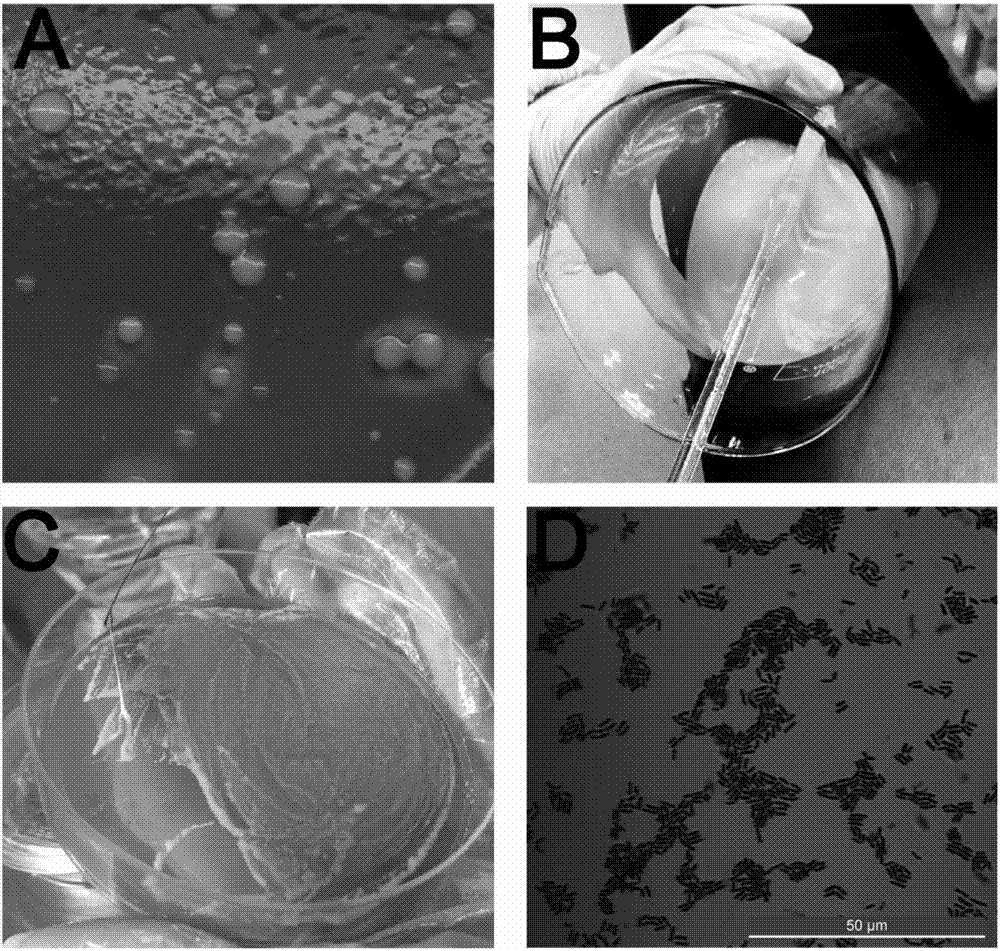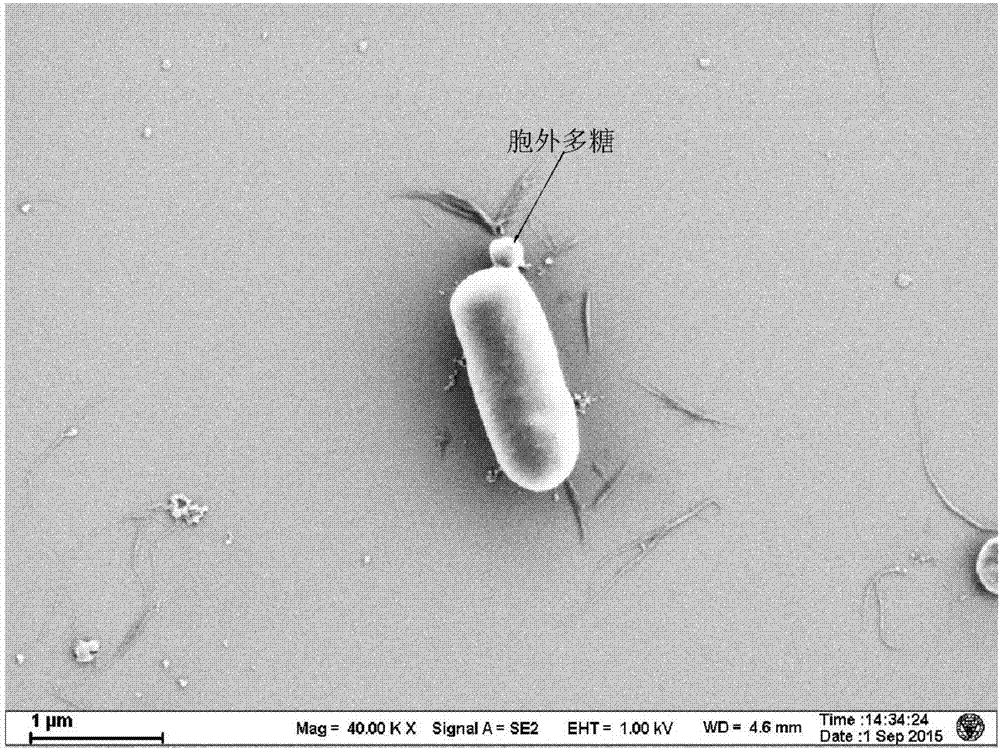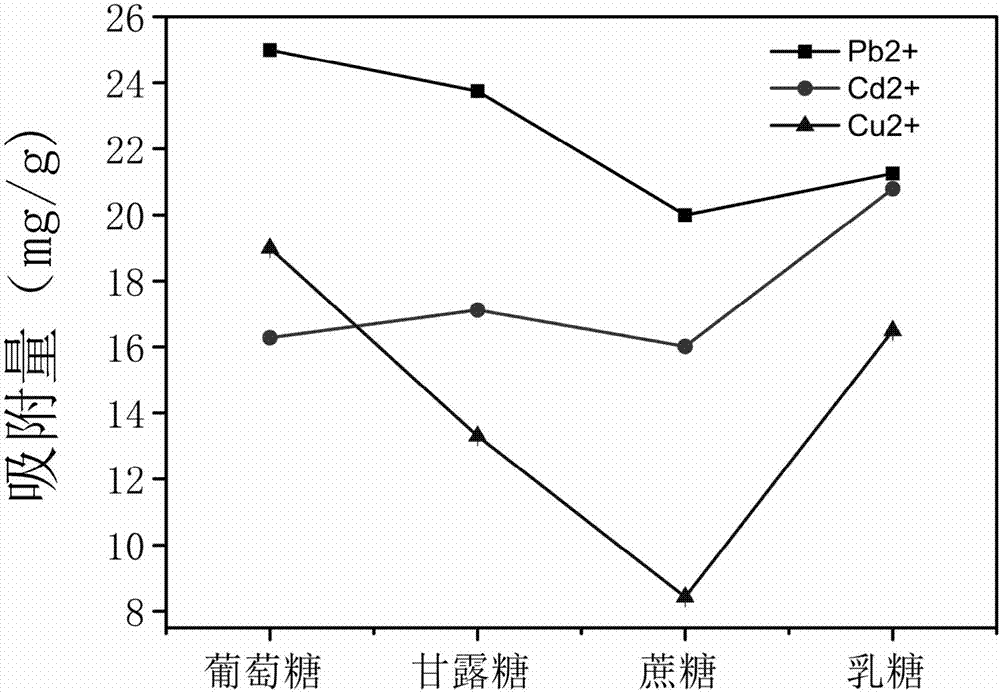Lactobacillus plantarum strain capable of producing extracellular polysaccharide
A technology of Lactobacillus plantarum and exopolysaccharide, which is applied in the field of biotechnology and food fermentation, and can solve the problems of poor adsorption effect and long adsorption time
- Summary
- Abstract
- Description
- Claims
- Application Information
AI Technical Summary
Problems solved by technology
Method used
Image
Examples
Embodiment 1
[0047] The isolation and screening of Lactobacillus plantarum LCC-605 comprises the following steps:
[0048] (1) Fermentation sample The liquid sample was taken from the homemade sauerkraut fermentation liquid in Qujing local family.
[0049] (2) Dilution of sample solution: Use a sterile 1mL pipette to draw 1mL sample solution into a sterile small test tube and dilute it with sterile normal saline to a dilution of 10 -1 、10 -2 、10 -3 、10 -4 、10 -5 、10 -6 、10 -7 、10 -8 、10 -9 、10 -10 、10 -11 、10 -12 . Choose a dilution of 10 -4 to 10 -12 spare.
[0050] (3) Separation of the plate: first, under the condition of aseptic operation on the ultra-clean bench, pour the sterilized MRS solid medium containing calcium carbonate into the plate, and draw the above dilution to 10 after the temperature is room temperature. -4 to 10 -12 0.1mL of fermentation broth. Pouring and coating onto the culture dish of the MRS solid medium containing calcium carbonate by pouring met...
Embodiment 2
[0052] Identification of Example 2 Bacterial Strain and Preparation of Exopolysaccharide
[0053] (1) Bacterial morphology observation and Gram staining
[0054] Use an inoculation loop to pick up a small amount of the matched bacterial sample prepared in Example 1 in the ultra-clean bench and spread it evenly on the glass slide, then heat it with an alcohol lamp to kill the bacteria, add ammonium oxalate crystal violet dropwise, and stain for 1 min. Rinse off excess staining solution on the washed slides with water, and blot dry with absorbent paper. Add a small amount of iodine-potassium iodide solution dropwise, let stand for 1min, then wash with water, blot dry with absorbent paper, add ethanol continuously dropwise for decolorization, until the outflowing liquid is colorless, then wash with water. Finally, counterstain with saffron stain for 30 s. After staining, observe with a microscope, Gram-positive bacteria are purple, and Gram-negative bacteria are red. The ident...
Embodiment 3
[0063] The detection of embodiment 3 heavy metal adsorption capacity:
[0064] (1) Effect of different carbon sources on biosorption effect
[0065] In order to explore the carbon source that makes the exopolysaccharide of lactic acid bacteria produce the best biosorption effect, MRS medium containing different carbon sources was used for fermentation. Lactic acid bacteria were cultured with MRS medium containing no carbon source and glucose, mannose, sucrose, and lactose respectively. After fermentation and extraction of exopolysaccharides, these six polysaccharides were prepared into 0.8mg / mL solutions and divided into 18 parts. Put it in a dialysis bag. Prepare 6 parts each of 10mg / L lead nitrate, cadmium nitrate and copper nitrate solutions, put the exopolysaccharide dialysis bags cultivated by 6 different carbon sources into the 3 kinds of ionic solutions respectively, and take samples of the ionic solutions after standing for 24 hours. Ion concentration detection. See...
PUM
 Login to View More
Login to View More Abstract
Description
Claims
Application Information
 Login to View More
Login to View More - R&D
- Intellectual Property
- Life Sciences
- Materials
- Tech Scout
- Unparalleled Data Quality
- Higher Quality Content
- 60% Fewer Hallucinations
Browse by: Latest US Patents, China's latest patents, Technical Efficacy Thesaurus, Application Domain, Technology Topic, Popular Technical Reports.
© 2025 PatSnap. All rights reserved.Legal|Privacy policy|Modern Slavery Act Transparency Statement|Sitemap|About US| Contact US: help@patsnap.com



